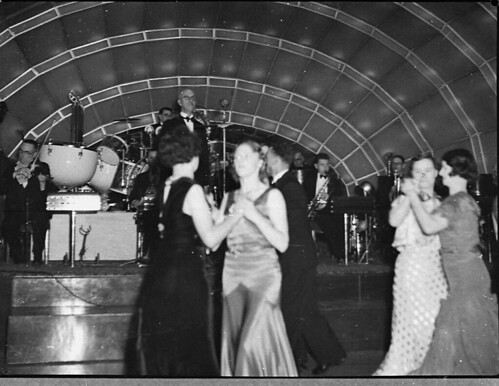
2CH Old Time Dance at Trocadero, October 1937, originally uploaded by State Library of New South Wales collection.

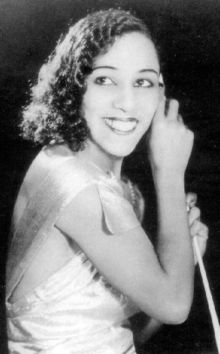
I’m a bit pushed for time today, as I’m in the middle of a dance weekend, but, well, I’m also hardcore. I’ll look up some less well known women later in the month when I have more time. :D
Blanche Calloway was Cab Calloway’s older sister, and was a musician, bandleader and composer in her own right.
This is a song she composed and recorded in 1934 with her male band the Joy Boys:
Sure, she was married to one of the most famous men in jazz, but Lil Hardin was – much more importantly – an accomplished singer, pianist, composer, arranger, band leader and business woman.
Hardin was a part of King Oliver’s Creole band, Louis Armstrong’s Hot Five, lots of other smaller projects, and of course led her own band. She’s popularly credited with pushing Louis Armstrong into a career of his own, outside the Oliver band.
Hardin recorded with Armstrong’s Hot Five in 1927, playing the song ‘Struttin with some Barbeque’ which she composed.
Louis Armstrong – Struttin’ With Some Barbecue
NB: I’m trying to list a different woman jazz musician every day for Women’s History Month. You can read this post for more info.
Mary Lou Williams was a phenomenal piano player, and one of the few who’s generally (though not hugely) well known in the lindy hopping world. She’s probably best known for her work with Andy Kirk’s band – as pianist and arranger but she went on to become an well known public figure and performer.
Read more about Williams here in this fascinating biography (which is where I found that image at the top of this post).
Williams composed, arranged and played on this 1938 version of ‘Little Joe From Chicago’, as well as heaps of other well-known songs by the Kirk band.
(Andy Kirk and his twelve clouds of joy – Little Joe from Chicago)
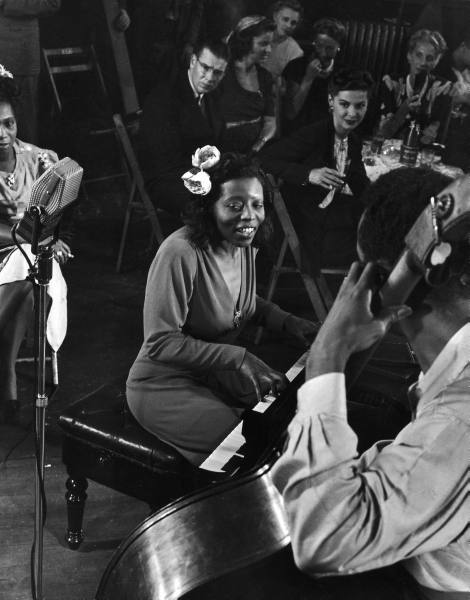
(An untagged photo of Mary Lou Williams in the Gjon Mili Life Magazine collection)
NB That’s Pearl Primus in the back, to the left.
Women’s History Month is here again, and this month I’m going to do a different woman jazz musician every day. I’m away in Melbourne for a weekend of actual, real live dancing, so I’ve pre-written this post. Hopefully it publishes properly.
I’ve started by stealing a post from last year because I haven’t had a chance to research this properly (you can read all my pathetic excuses here in this post.)
Here’s a whole band full of amazing jazz women: Ina Rae Hutton and her Melodears!
You can read more about Hutton in this good little Guardian article from last year (which is where I found that cool photo).
Women’s History Month is just about here again. Ah, March, season of Power Vag and Orsm Ovary. Time of Menopausal Might and Menarchal Majesty. Moonth of Fuck All That Biological Determinism, Let’s Get On With Doing Mad Shit.
This year’s theme is Women With a Plan: architects, town planners and landscape architects and I had planned to list a different woman choreographer each day, but I’m just about to go away and didn’t get any research done. Bad Girl! Then I decided I’d lift a few Excellent Jazz Women of Win from last year’s posts and put some new ones together when I get back. Because, frankly, it’s probably more important that a woman’s out there actually dancing than writing about dance, right?
Now I’m wondering if I should do a different woman jazz musician every day instead. Just repeating dancers from last year won’t really teach me much, and I found that having to scrabble to find a different woman dancer taught me a lot last year. And it wasn’t actually hard to find 31 different women dancers – I ended up with plenty more than I needed! The best part was hassling all my dance history friends for help and details :D
Ok, this year I’ll do musicians. But I don’t really have time to put together some posts ahead of time for this weekend when I’m away dancing. So I might have to make them up at the end of the weekend instead, Ok? I might borrow one from last month to start me off, though.
Just to add to the challenge, to celebrate Women’s History Month, I might see if I can do zero following in March, and only lead. This is going to break my heart when male (lead) friends ask me to dance, particularly while I’m away this weekend, but I’ll see just how long I can go. Why do this? Well, I just thought of it then when I was thinking, and I like a challenge. Also: why the fuck not?
Women’s History Month: month of potty mouthed blog posts, it seems.
Ok, get ready for me to come begging for ideas for women musicians mid-way through March. I’m probably going to end up needing your help. :D
I’m in a DJ dual (not duel, because I am a big hippy and Choose Not To Race) on Friday at the Sweet n Hot weekend in Melbourne next weekend, and I’m busily getting my nerves on. I’m such a big baby.
It’s going to be a lot of fun, I think, Keith and I are going to be swapping songs, and that’s a great place to start, because Keith and I have similar taste in music, though different collections, and I know Keith is a clever DJ, so he’ll rescue me if I fuck up. And I’m familiar enough with his vibe that I reckon I can complement what he does. I’m hoping we’ll make each other squee with fun.
So far I have listened to this song about four times, because I’m still really hot for boogie woogie because of this Mosaic select 3CD set.
(78rpm: Boo-Woo – Harry James and the Boogie Woogie Trio, 1939 – Columbia 35958/C-44)
I know boogie woogie isn’t really the very best music for lindy hop, but it’s a mixed balboa/lindy hop crowd and… nope. That’s not going to help me. I JUST LOVE IT OK. I get a bit hot for chunky Kansas swing and uptempo blues. Big Joe Turner. Basie. Jay McShann. Etcetera, etcetera. I love the thumpy excitedness of it.
I’m still hot for Bob Wills. It’s like one of those crazy fevers that burns you out and then you die. I’ve got quite a bit of his stuff, and I quite like the stuff he did in 1941 (or so). I’m talking about the songs with a good pianist and possibly some brass to balance all those strings.
…and that’s about as far as I’ve gotten preparing. But I’m expecting to lean on the high energy stuff, moving up and down the tempos. We’re swapping three songs each (I think), so that’s about long enough to work a little wave, or to respond to Keith’s last song and build on it. We’re only going for an hour or an hour and a half, starting earlier in the night, so we’ll be able to build things up from nothing. I hope. To be honest, I haven’t really looked at the running sheet properly. All I really know is that it is ON and it will be FUN.
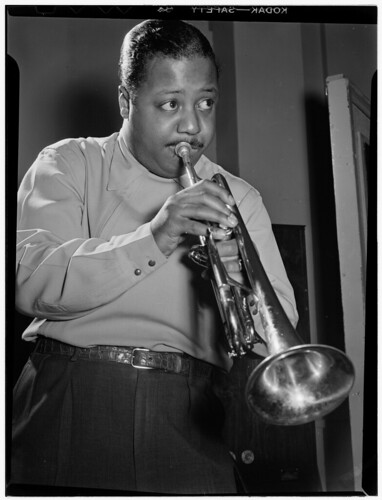
I’m a big fan of Charlie Shavers, but I didn’t realise I was until I started getting nerdy with the discographies. As I added musicians to song information in my collection I realised his name just kept popping up, mostly with other artists I love. So I’ve made an 8track of some songs from my favourite bands.
You can read his own account of his life in this little autobiographical piece, Charlie Shavers: About the Size of It (talking to Les Tomkins in 1970). But here are some interesting things about Charlie Shavers:
There are plenty of other things to say about Charlie Shavers, but I’d rather listen to his music.
Here’s the set list for this 8track. It’s mostly smaller bands, I’m afraid, even though Shavers did so much work with big bands. But this probably a more accurate indication of my tastes!
Four Or Five Times – Jimmie Noone and his Orchestra (Charlie Shavers, Pete Brown, Frank Smith, Teddy Bunn, Wellman Braud, O’Neil Spencer, Teddy Simmons) – 173 – Jimmie Noone 1934 – 1940 – 1937 – 3:09
Sloe Jam Fizz – Buster Bailey and his Rhythm Busters (John Kirby, O’Neil Spencer, Charlie Shavers) – 147 – Buster Bailey: Complete Jazz Series 1925 – 1940 – 1938 – 2:26
Blue Monday On Sugar Hill – Coot Grant (Leoloa B. Wilson), Kid Wesley ‘Sox’ Wilson, Charlie Shavers, Sidney Bechet, Sammy Price, Teddy Bunn, Richard Fullbright, O’Neill Spencer) – 213 – Charlie Shavers and The Blues Singers 1938-1939 – 1938 – 2:17
Blues Galore – Johnny Dodds and his Chicago Boys (Charlie Shavers, Lil Armstrong, Teddy Bunn, John Kirby, O’Neil Spencer) – 148 – Complete Jazz Series 1928 – 1940 – 1938 – 2:47
Them There Eyes Billie Holiday and her Orchestra (Charlie Shavers, Tab Smith, Kenneth Hollon, Stanley Payne, Sonny White, Bernard Addison, John Williams, Eddie Dougherty) – 180 – Lady Day: The Complete Billie Holiday On Columbia (1933-1944) (Disc 06) – 1939 – 2:51
Fine and Mellow – Charlie Shavers with Alberta Hunter – 87 – Charlie Shavers and The Blues Singers 1938-1939 – 1939 – 2:52
Undecided – Fats Waller and his Rhythm (Herman Autrey, Gene Sedric, Al Casey, Cedric Wallace, Slick Jones) – 97 – The Middle Years – Part 2 (1938-1940) (disc 2) – 1939 – 3:38
Effervescent Blues – John Kirby Sextet (Charlie Shavers, Buster Bailey, Russell Procope, Billy Kyle, William ‘O’Neill’ Spencer) – 119 – John Kirby Sextet: Complete Columbia and RCA Victor Recordings (disc 01) – 1939 – 2:50
Royal Garden Blues – John Kirby Sextet (Charlie Shavers, Buster Bailey, Russell Procope, Billy Kyle, William ‘O’Neill’ Spencer) – 276 – John Kirby Sextet: Complete Columbia and RCA Victor Recordings (disc 01) – 1939 – 2:33
Come Easy Go Easy – Rosetta Howard acc. by the Harlem Blues Serenaders (Charlie Shavers, Buster Bailey, Lil Armstrong, Ulysses Livingston, Wellman Brand, O’Neil Spencer) – 90 – Rosetta Howard (1939-1947) – 1939 – 3:03
St. Louis Blues – John Kirby Sextet (Charlie Shavers, Buster Bailey, Russell Procope, Billy Kyle, Gordon ‘Specs’ Powell) – 221 John Kirby Sextet: Complete Columbia and RCA Victor Recordings (disc 02) – 1941 – 2:45
Oh I’m Evil – Una Mae Carlisle with Charlie Shavers, Buster Bailey, Russell Procope, Billy Kyle, John Kirby, O’Neil Spencer – 158 – Una Mae Carlisle: Complete Jazz Series 1938 – 1941 – 1941 – 2:25
Don’t Tetch It! – Una Mae Carlisle with Charlie Shavers, Buster Bailey, Russell Procope, Billy Kyle, John Kirby, O’Neil Spencer – 191 – Una Mae Carlisle: Complete Jazz Series 1941-1944 – 1942 – 2:21
Long, Long Journey – Esquire All-American Award Winners (Louis Armstrong, Charlie Shavers, Jimmy Hamilton, Johnny Hodges, Don Byas, Duke Ellington, Billy Strayhorn, Remo Palmieri, Chubby Jackson, Sonny Greer) – 103 – The Duke Ellington Centennial Edition: Complete RCA Victor Recordings (disc 17) – 1946 – 4:31
I Cried For You – Billie Holiday and her Band (Charlie Shavers, Oscar Peterson, Herb Ellis, Ray Brown, Ed Shaughnessy) – 115 – The Complete Verve Studio Master Takes (disc 2) – 1954 – 2:28
Easy Does It – Big Eighteen (Billy Butterfield, Buck Clayton, Charlie Shavers, Rex Stewart, Lawrence Brown, Vic Dickenson, Lou McGarity, Dicky Wells, Walt Levinksy, Hymie Schertzer, Sam Donahue, Boomie Richman, Ernie Caceres, Johnny Guarnieri, Barry Galbraith, Milt ) – 129 Echoes of the Swinging Bands – 1958 – 5:14
‘Four or Five Times’ is quite a well-known song. Jimmie Noone first recorded it in 1928, but I love this later version that includes Shavers. It has a lovely, light, swinging feel.
‘Sloe Jam Fizz’ is by Buster Bailey and his Rhythm Busters, and includes not only Charlie Shavers, but also John Kirby, who Shavers later went on to work with.
‘Blue Monday on Sugar Hill’, credited to Grant and Wilson, is a fun song featuring lots of famous people – Sam Price, Sidney Bechet, O’Neil Spencer. It reminds me of Lil Armstrong’s band. The Bechet-Shavers connection is pretty interesting.
‘Blues Galore’ is another nice song, this time by Johnny Dodds and His Chicago Boys, which again features John Kirby, O’Neil Spencer and Charlie Shavers, but this time Lil Armstrong is credited. I reckon this song really heralds the type of stuff Kirby’s band did later – quite a light, gentle touch, but with a really solidly swinging rhythm, perhaps a bit more insistent than in Kirby’s small groups later on. The vocals are great.
‘Them There Eyes’ is a bit different to the earlier songs, but I think that Shavers’ style really helped develop Holiday’s sound during this period. I don’t think this song is as good as a lot of the stuff she did with Teddy Wilson, for example, but there’s much in common. I think Shavers and Wilson have a similar approach to songs, so it’s not too surprising to find them together with a musician like Billie Holiday.
I don’t know much about this version of ‘Fine and Mellow’ as it’s just new to my collection, but I couldn’t resist the connection with Holiday, who of course recorded a very famous version of this song. I like this version, though, for Alberta Hunter’s gravelly vibrato contrasting with Shavers’ tootly and growly trumpet.
This nice, light version of ‘Undecided’ is a nice antidote to the laboured versions which are overplayed in the lindy hopping world. I loooove the way Shavers’ sense of humour blends perfectly with Wallers’. There’s a wheedly, whiney tone that winkles its way into your ear.
‘Effervescent Blues’ is probably one of the better known Kirby band songs in the lindy hop world, mostly because it was covered by the Mora’s Modern Swingtet. I like the rolling piano matched with the tootly melody. It has the light touch I associate with the Shavers/Kirby pairing, but it’s not as light and complicated-feeling as their later stuff.
‘Royal Garden Blues’ is tootly. It’s super fast and complicated. It really is a good example of what some people call ‘chamber jazz’. I love it. I like the way this group has a lot in common with Benny Goodman’s small groups, but actually has quite a different feel.
‘Come Easy Go Easy’ is completely different – Rosetta Howard isn’t subtle or tootly or tinkly. But Shavers’ whiney trumpet sets off her grittier style really nicely. This line up is again, quite familiar, and it echoes those earlier songs with blues singers. It’s interesting to see that Shavers was doing this in the same year as that busybusy Kirby group stuff.
Two years later, the Kirby Sextet has really set off on its course. This version of ‘St Louis Blues’ is complicated small group jazz. Hot, but also quite finessed.
I’m a big fan of Una Mae Carlisle. She’s got a sophisticated style, but can really get hot. Her timing is wonderful – she just sits back there behind the beat. I like the way she works with that little band, that’s pretty much the same gang as in all those other small Shavers’ groups.
Four years later, this Esquire all star band is something completely different. It’s commercial jazz at its most extravagant.
I added in ‘I cried for you’ just as an example of how Holiday’s style changed, and how she and Shavers still work together so well. This is magical, particularly with the addition of Oscar Peterson and Ray Brown.
‘Easy Does It’ is another of those ‘stunt bands’ put together in a kind of mishmash of big names. But this is a great song, and it always reminds me of Frankie Manning.
[EDIT]Trev has just pointed out that I missed the part where Charlie Shavers was with the Mills Blue Rhythm Band. This is a bit of an oversight on my part, to be explained by the fact that I didn’t actually own the 1937 MBRB stuff. This has been rectified.[/]
Direct link to this 8tracks set which includes one song from each of these albums.
Our students keep asking us for music recommendations, so I’ve put together a list of albums I consider ‘essential’ swing for new dancers, or people just beginning a collection. The first draft of this list had about sixty million albums and eleventy hundred artists. But I had to keep this real. I think this list is a bit long – 19 specific albums and a heap of modern artists? Too long for someone who’s just starting to collect!
This is, really a list of music that I think would kick off a good collection. It is, of course, informed by my own musical preferences, and by the music I started my collection with (and by Reuben’s excellent list). I expect most people to argue with me about this list – that’s a good thing. We should all have strong feelings about the music we dance to, and we should all be heavily invested in musicians and their work. If we just got up and danced to any old shit, our dancing would would be totally rubbish. But this is a list of albums that I think are a good place to start a collection. My list of definitive, most important to lindy hop (or charleston, or balboa or blues or jazz) music would probably be quite different.
Putting this list together, I realised that I’ve been neglecting a lot of these staples in my own DJing. I’ve been using lots of modern bands and getting into more esoteric artists and recordings. And, frankly, I think that’s a mistake. Here’s the provocative part of this post: swing DJs today need to play more solid big band swing, and to lay off the rare-and-unusual small band esoterica.
Buying swing music is very different these days, just seven years after I started DJing. I remember hunting down that Count Basie ‘Breakfast Dance and Barbeque’ CD at a local Borders. I’d be surprised if you could find it in any music shop today…though I do see it (very rarely) in a JB Hi-fi. Actually, the only brick and mortar shop I recommend is Music Without Frontiers in Hobart. That guy who runs that shop knows EVERYTHING about all music. If he suggests something to me, I buy it, whether I know the artist or not. Because he’ll only recommend very good quality albums, by important artists. Even if I don’t love it at first, I know I’ll suddenly realise, even a year later, that this is the important album I needed to hear.
Most of the first albums I bought were CDs purchased online through amazon, my collecting prompted by a sudden surge by the Australian dollar, are now available through itunes, and I can’t really imagine a good reason for not buying electronic versions. Sure, you won’t get the liner notes, and that means you won’t know who’s in the band, when songs were recorded, and in what cities, but all that information is available online in jazz discographies like Tom Lord’s Jazz Discography, or sites like www.redhotjazz.com. Actually, now I think about it, it’s quite difficult to get decent discographical information for jazz. Someone really needs to put a copy up on the torrents, because no one is going to care in a few years; jazznerds are dying off.
So, to make sure there are a few more jazznerds to replace them, here are some gateway drugs.
The beginnings of a swing music collection.
Just getting into swing dancing, and wanting a bit of music to practice to, or to just help you figure out what the music was all about? Hopefully this list will be helpful. I’m going to tip the list upside-down, chronologically speaking, so the most accessible stuff – the contemporary bands and 1950s stuff – is at the beginning. But feel free to graze the list randomly.
Where do I start?
Collecting swing can get addictive, but it can also be a bit overwhelming at first. Big band classic swing from the 1930s and 40s is probably the most important. This is a good compilation to give you a taste of the different artists in the classic big band swing family:
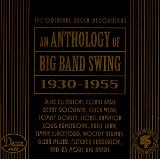
Modern bands:
A lot of new dancers like to start with 1950s recordings, or with current-day bands recreating old sounds. That’s totally cool – they’re a gateway drug!
There are lots and lots of bands doing great music all over the world today. This album is a must-have, and a very good place to begin a collection:
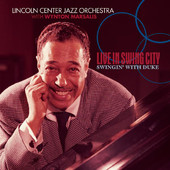
Here are some other bands that are popular with dancers (in no particular order):
After that, it’s a matter of following your nose. Chase down the original recording(s) of the songs on these albums and see what you like.
Music by decade:
Harlem lindy hoppers of the 1930s and 40s, like Whitey’s Lindy Hoppers were mostly into big band swing, and would go out to dance to big bands most nights of the week at big ballrooms and dance halls like the Savoy Ballroom.
This is a very basic list of good quality albums with lots of good dancing music by musicians and bands from the 1950s, 40s and 30s.
Modern era swing: 1950s
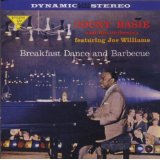
A high quality live recording of Basie’s big band playing favourites to an enthusiastic audience at a late night/early morning show. Features Joe Williams on vocals.

A 2-disc recording of Basie’s ‘New Testament’ big band in the studio. Features many of the hits from the bands’ 1930s playbook, including ‘Jive at Five’ and ‘Shorty George’. Joe Williams on vocal again.
[amazon; itunes]
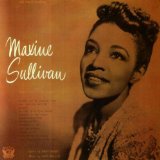
A recording from later in her career, Sullivan sings with an excellent group of musicians, famous in their own right (including Buster Bailey, Milt Hinton, Dick Hyman).
[amazon; itunes]

Excellent 1950s swinging small group stuff featuring lots of great musicians (including Ben Webster, Roy Eldridge, Coleman Hawkins), as well as Kansas City’s famous singer.
[amazon; itunes]
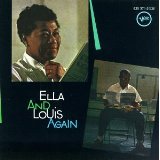
1950s small group recordings of two of the biggest names in jazz. Mostly slower, groovier feeling swing. Excellent listening, with a band featuring brilliant musicians (including Oscar Peterson, Ray Brown, Herb Ellis, etc).
[amazon; itunes]
Classic swing era: 1940s

A 2 CD set featuring some of the best 1940s Lionel Hampton big band music. The 50s stuff is a little too jump blues for lindy hop, but is still lots of fun. This album comes with lovely packaging, including great liner notes. Features iconic song ‘Flying Home’.
[amazon; itunes]

Often overlooked by modern dancers, Barnet’s big band was very popular with lindy hoppers in the swing era, and this album is a good introduction to its 1940s recordings.
[amazon; itunes]
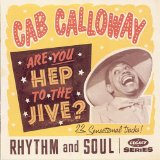
Cab Calloway is probably best remembered today for his performance of ‘Minnie the Moocher’ in the Blues Brothers film, but this charismatic band leader led an excellent big band whose lyrics were usually played for laughs.
[amazon; itunes]
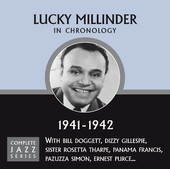
Lucky Millinder’s band with Sister Rosetta Tharpe singing is very popular with dancers, though his work with the Mills Blue Rhythm Band in the 1930s is perhaps a little better.
[itunes]
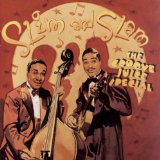
Slim Gaillard and Slam Stewart were recording large number of funny songs which are great for dancing throughout the 30s and 40s, and then into the 50s. They’re very popular with dancers today.
[amazon; itunes]
Classic swing era: 1930s
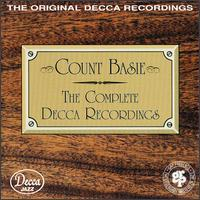
A 3-CD collection of the 1930s hits by one of the best-known band leaders of the swing era. This is a big set, so it’s worth previewing the songs to find ones you like. Popular songs include ‘Topsy’, ‘One O’Clock Jump’ and ‘Jive at Five’.
[itunes; amazon]
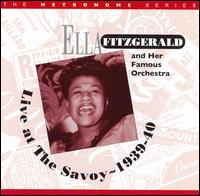
Features Ella leading (and not singing much) with the Chick Webb band just after he died. This is a brilliant series of live recordings which really capture the feel of the Savoy Ballroom, home to lindy hop!
[amazon]
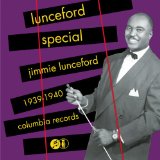
Lunceford’s 1930s big band is very popular with dancers, and this is a great collection of Lunceford songs from just one year, including dancers’ favourite ‘For Dancers Only’.
[amazon; itunes)]
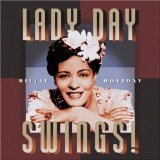
Billie Holiday in the late 30s and early 40s, mostly with Teddy Wilson’s Orchestra. Holiday can be a bit tricky for dancing because she does complicated things with timing, but the bands are great and the songs are all very famous.
[amazon; itunes]
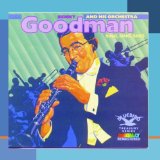
Goodman is famous for both is small and big bands, but this is a good introduction to his 1930s big band recordings. Includes the songs ‘Bugle Call Rag’ and ‘Roll ’em’.
[amazon; itunes]
Jazz era: 1920s
There’re lots and lots of very excellent artists and albums in this group, but I haven’t gone into them here, as I don’t really think they’re a great place to begin if you’re looking for music for lindy hop. I do think this a group worthy of its own post, so….
Places to buy music:
It’s always best to buy albums directly from bands if you can, so checking their websites is a good start.
Digital downloads:
– itunes
– CDbaby for modern bands, and some older stuff
– bandcamp
– emusic if you have access to an account
Online shopping:
– amazon for CDs
– cduniverse for CDs
Brick and mortar shops:
– Music without Frontiers in Hobart
– ordering at your local music shop (often cheaper and faster to buy online yourself)